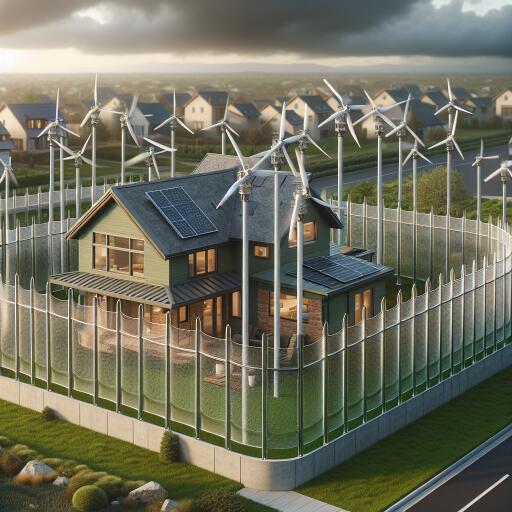
Revolutionizing Home Energy: The Wind Fence Solution
In the quest for sustainable living, an innovative breakthrough has arrived that promises to change the face of home energy production: the invention of the wind electricity fence. This pioneering technology offers a viable solution to a common problem faced by many homeowners – the lack of sufficient space for solar panels. By harnessing wind energy in urban environments, the wind fence is set to become a key player in the renewable energy sector, particularly for residential and commercial buildings in densely populated areas.
The concept of the wind fence introduces a new method of generating power using a series of vertical axis wind turbines arranged in a linear fashion. This design is specifically optimized for urban settings, where traditional wind turbines might not be feasible due to space constraints. By exploiting the wind currents created by city landscapes, these fences are capable of converting wind into a significant source of electricity.
Dubbed the Airiva Wind Turbines, this cutting-edge technology has been masterfully crafted to merge functionality with modern aesthetics. The turbines, a brainchild of designer innovation, incorporate a sleek, cylindrical contour housing slender vertical blades. This design not only harmonizes with contemporary architectural forms but also maximizes the efficiency of wind energy capture through a dynamic, pulsating vortex motion.
Made from materials that prioritize both lightness and durability, the Airiva Wind Turbines are engineered to produce minimal noise while maximizing energy output. Their elegant appearance and efficient operation make them a perfect fit for cityscapes, offering a visually appealing alternative to traditional energy generation methods.
The structural makeup of the Airiva Wind Fence is a testament to its innovative approach to generating wind energy. Its series of turbines feature a distinctive fence-like arrangement, with each turbine boasting a tubular shape and equipped with multiple blades perpendicular to its axis. This unique configuration allows the fence to capture wind from different directions without the need for the wind to be directly facing the turbines, unlike conventional horizontal axis turbines.
One of the most remarkable attributes of these vertical axis turbines is their ability to harness wind energy in low-wind conditions, a common scenario in urban environments. This capability ensures consistent electricity generation throughout the day, potentially offering a steady source of energy for self-consumption. The adaptability and efficiency of the Airiva Wind Fence present a compelling alternative to solar energy, particularly in areas where sunlight may be limited.
The integration of the Airiva Wind Fence into our urban and residential spaces represents not just a technological breakthrough but a step towards a more sustainable and energy-independent future. Through its innovative design and operational efficiencies, the wind fence is poised to significantly impact how we generate and consume energy at home. By providing a renewable energy solution that complements existing solar power systems, the Airiva Wind Fence heralds a new chapter in the pursuit of sustainable energy solutions for the modern world.
In essence, the Airiva Wind Fence exemplifies the evolution of renewable energy technologies, combining aesthetic appeal with practical, efficient energy generation. Its introduction into the market is a promising development for homeowners and businesses alike, offering a new pathway to energy self-consumption and underscoring the growing importance of sustainable, renewable energy sources in our daily lives.





Leave a Reply